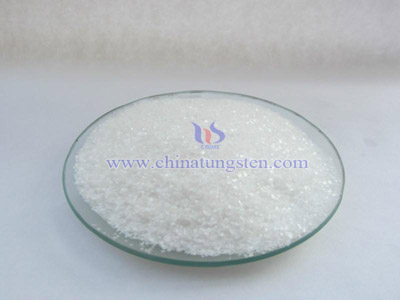Sodium Molybdate and Sodium Tungstate Corrosion Inhibition to Stainless Steel
- Details
- Category: Tungsten Information
- Published on Tuesday, 12 January 2016 19:39
Sodium molybdate is white diamond crystal. It can be oxidizing roasted by molybdenum concentrate to generate molybdenum oxide. Sodium molybdate solution is generated by liquid alkali leaching. After the suction filter, concentration, cooling, centrifuging and drying, sodium molybdate can be obtained. There are many kinds of applications of sodium molybdate. It’s mainly used in the manufacture of alkaloids, printing ink, chemical fertilizer, molybdenum red pigment, precipitation agent, catalyst and molybdenum salt. It can also be used in the manufacture of flame retardants and pollution-free type metal inhibitor of cooling water system and it’s also used as zinc plating, polishing agent and chemical reagents.

The corrosion of metal is an extremely serious damage factor in the modern industry and life, which brings huge economic losses and safety hazards to the human society. Using corrosion inhibitor has important economic meaning and environmental meaning. Sodium tungstate and sodium molybdate are non-toxic, harmless and inorganic corrosion inhibitors, which have good corrosion inhibition for the corrosion of the metal. This paper mainly discusses the corrosion inhibition of sodium tungstate and sodium molybdate to stainless steel in acid medium. Through the contrast research, conclusions can be drawn:
1. In 1.0 mol/L sulfuric acid solution, sodium molybdate and sodium tungstate make corrosion potential of stainless steel move to positive direction. This shows that they are anode type corrosion inhibitors.
2. In 1.0 mol/L sulfuric acid solution, different concentrations of sodium molybdate and sodium tungstate can reduce critical passive current density of stainless steel. But its mechanism is not the same. Sodium molybdate is the reduction and adsorption on the surface of the electrode, but sodium tungstate reduces critical passive current density of stainless steel by the heteropoly acid deposition.
3. The stainless steel forms the passivation membrane surface in 1.0 mol/L sulfuric acid solution containing sodium molybdate. It’s mainly composed of Cr (III), Mo (VI), Fe (III), Ni (II), O2- and OH. Mo (IV) has not been found on the surface of membrane. Molybdenum mainly exists as Mo (VI) in the inner membrane.
4. In 1.0 mol/L sulfuric acid solution, sodium molybdate has inhibitory effect to the cathode process and obvious inhibitory effect in low concentration. Sodium tungstate doesn’t have obvious inhibitory effect on cathodic hydrogen evolution.
| Sodium Tungstate Supplier: Chinatungsten sodium-tungstate.com | Tel.: 86 592 5129696; Fax: 86 592 5129797;Email:sales@chinatungsten.com |
| Tungsten News & Prices, 3G Version: http://3g.chinatungsten.com | Molybdenum News & Molybdenum Price: http://news.molybdenum.com.cn |



 sales@chinatungsten.com
sales@chinatungsten.com